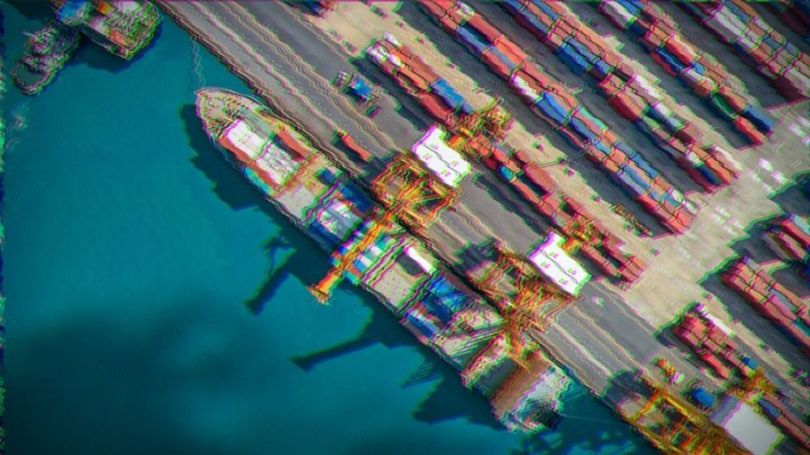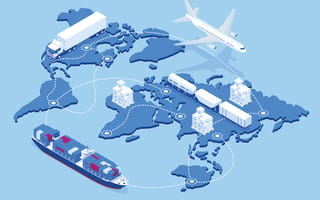If you scroll down a clothing item’s page on Everlane, you’ll find available colors, sizing information and a note about the factory where it was cut and sewn.
That’s partly because consumers increasingly favor brands that provide information on how their products are sourced and supplied, due to concerns both environmental and humanitarian.
But it’s not just socially conscious consumers who benefit from a clear view of supply chains. It’s also the companies themselves.
“You want to know your supply chain so you can sleep at night,” Leonardo Bonanni told Built In.
“You want to know your supply chain so you can sleep at night.”
Bonanni’s company, Sourcemap, helps businesses track and analyze their supply chains — which are convoluted webs, difficult to untangle.
Sourcemap does it by creating a non-relational database that functions as a sort of social network, “a lot like LinkedIn,” which connects companies to their direct and indirect suppliers.
It seems simple, but in a shadowy industry that’s long relied on paper and pen, a network like this is startlingly revolutionary.

Supply Chains Are Intentionally Opaque
“Supply chain management has been designed to be opaque,” Alexis Bateman, director of the Sustainable Supply Chains Initiative at the Massachusetts Institute of Technology Center for Supply Chain Logistics, told Built In. (She and Bonanni wrote an article on supply chain transparency for Harvard Business Review last fall.)
The opacity is seen as a competitive advantage. Companies are careful not to divulge their “secret sauce” — be it better material or an affordable supplier — to competitors. For example, when Swedish denim company Nudie launched its own supplier audit initiative, its managers were initially hesitant to disclose the prices they paid to suppliers and their profit margins. They considered such information to be a business secret.
Unraveling the knots of a supply chain can be risky in other ways too. It might expose objectionable labor practices or negative environmental impact, which a company would have to devote resources to addressing.
“Supply chain management is designed to be opaque.”
But supply chain management has also lagged in the technical department. It’s only recently that operations have begun to digitize their supply chain data and move it into the cloud. And global supply chains are notoriously analog, making them especially difficult to track and audit.
Not too long ago, the status quo was: “It was impossible to know if something really bad happened to a supplier in the fourth tier halfway around the world,” Bonanni said, “until somebody else told you.”
If you’re a company trying to trace the supply chain upstream, from the manufacturer all the way back to the source of the raw materials, you’re “working against the grain,” Bateman said. “There’s an information gap.”

So Why Do Companies Want to Know?
By increasing supply chain transparency, companies can secure their supply. If they encounter any hiccups in the chain, they can quickly react and go elsewhere for alternative solutions.
“In a resource-constrained world,” Bonanni said, “if you don’t know where your materials are coming from, the day that they run out, you’re going to be the last one to find an alternate source of supply.”
Supply chain disruptions come in many forms, ranging from labor disputes to natural disasters. For example, Bonanni said several companies asked him to map their supply chains in the wake of an earthquake and tsunami that devastated Northeast Asia. Upon examining their books, Bonanni was stunned to learn that these companies didn’t know who was supplying their suppliers, or to what extent their resources were affected by the disaster. This left them vulnerable.
By building relationships beyond their direct suppliers, companies can patch up these vulnerabilities.
“If you don’t know where your materials are coming from, the day that they run out, you’re going to be the last one to find an alternate source of supply.”
Companies that increase visibility into their supply chains also benefit from enhanced quality control. A clearer view of operations, access to real-time data and better communication between suppliers allows for companies to quickly react to a recall, or more accurately anticipate inventory issues.
Supply chain transparency also improves a company’s reputation, Bonanni said. For example, the apparel company Patagonia, which publishes its supply chains on its website, boasts a 4 percent employee turnover rate.

Leveraging Networks to Map the Supply Chain
Sourcemap begins by taking a company’s data about its supply chain: “It’s usually a few spreadsheets,” Bonanni said.
Next, it invites the company’s suppliers into a private, database-like social network.
“Our customers are basically saying to their suppliers, ‘Hey, we want to keep doing business with you, we need to know who your suppliers are and where you buy from.’”
From there, those suppliers are encouraged to invite their suppliers. And so on and so forth.
“It’s kind of a cascading invitation system,” Bonanni said. As the process unfolds, Sourcemap’s customers end up with a map of their raw materials, from the origin, as they make their way through the supply chain and get to manufacturing and customers. “[We] make it possible to communicate with thousands, tens- or hundreds of thousands of suppliers, all in real time.”
“Transparency has become a bellwether of good operations practice.”
Sourcemap maps each company’s supply chain on a visualization of the Earth, and, using automated heatmaps, pinpoints the biggest risks, the bottlenecks, the blind spots. Companies can use it to monitor their supply chains and quickly assess risks and opportunities.
To the untrained eye, this process might look a bit low-tech. Wasn’t the blockchain supposed to fix this?
“Blockchain is actually great if you’ve already digitized everything and you have good data,” Bonanni said. “But 99 percent of the time, the data doesn’t exist or it is garbage. Our job is to get it into a clean digital format and verify it.”
Blockchain may be the way of the future. But “we’re not ready” for it, Bonanni said. “We’re still trying to account for every piece of material that’s sold.”
Bonanni is encouraged by what he’s seen this past decade. What companies are realizing, he said, is that transparency begets other healthy business practices. If a supplier is reluctant about increasing transparency in their supply chain, it might also be concealing things like quality issues and corruption.
“Transparency has become a bellwether of good operations practice,” Bonanni said. “And our customers are swinging their supply chain over to those suppliers that are transparent and away from those that aren’t.”




